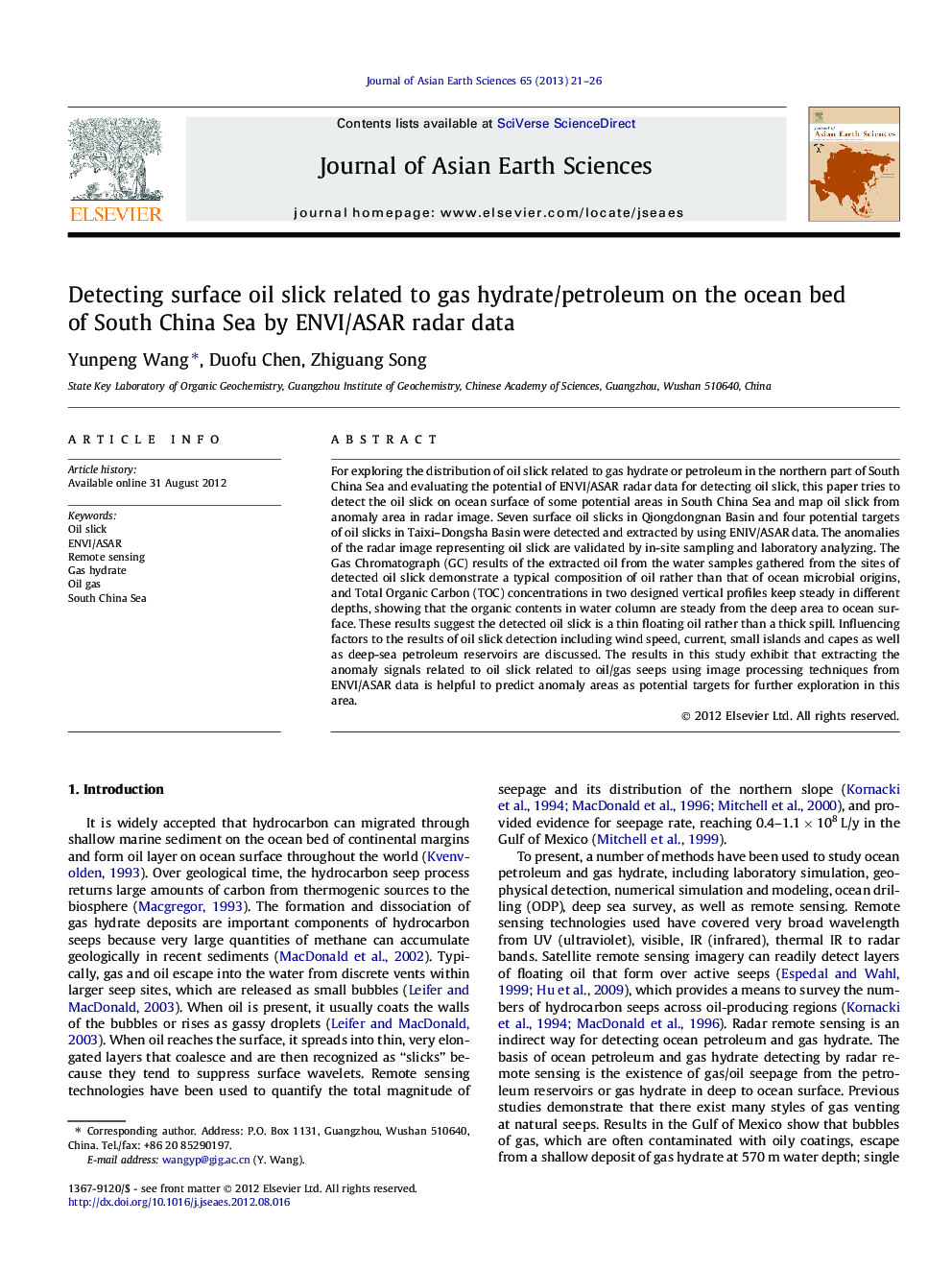| Article ID | Journal | Published Year | Pages | File Type |
|---|---|---|---|---|
| 4731192 | Journal of Asian Earth Sciences | 2013 | 6 Pages |
For exploring the distribution of oil slick related to gas hydrate or petroleum in the northern part of South China Sea and evaluating the potential of ENVI/ASAR radar data for detecting oil slick, this paper tries to detect the oil slick on ocean surface of some potential areas in South China Sea and map oil slick from anomaly area in radar image. Seven surface oil slicks in Qiongdongnan Basin and four potential targets of oil slicks in Taixi–Dongsha Basin were detected and extracted by using ENIV/ASAR data. The anomalies of the radar image representing oil slick are validated by in-site sampling and laboratory analyzing. The Gas Chromatograph (GC) results of the extracted oil from the water samples gathered from the sites of detected oil slick demonstrate a typical composition of oil rather than that of ocean microbial origins, and Total Organic Carbon (TOC) concentrations in two designed vertical profiles keep steady in different depths, showing that the organic contents in water column are steady from the deep area to ocean surface. These results suggest the detected oil slick is a thin floating oil rather than a thick spill. Influencing factors to the results of oil slick detection including wind speed, current, small islands and capes as well as deep-sea petroleum reservoirs are discussed. The results in this study exhibit that extracting the anomaly signals related to oil slick related to oil/gas seeps using image processing techniques from ENVI/ASAR data is helpful to predict anomaly areas as potential targets for further exploration in this area.
